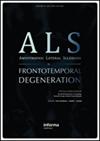日本ALS患者总能量消耗的测量和估计:一项双标记水法研究
IF 2.8
4区 医学
Q2 CLINICAL NEUROLOGY
Amyotrophic Lateral Sclerosis and Frontotemporal Degeneration
Pub Date : 2017-01-02
DOI:10.1080/21678421.2016.1245756
引用次数: 14
摘要
摘要肌萎缩侧索硬化症(ALS)患者尚未建立适当的营养治疗方法。我们的目的是测量总能量消耗(TEE),并确定一个方程来估计日本ALS患者的能量需求。26名日本ALS患者参与了这项研究。TEE采用双标记水(DLW)法测量,为期14天。通过一系列临床参数和多元回归分析,我们确定了一个计算TEE的适当方程。结果显示,总能量摄入(TEI)的中值为1581(四分位间距1278-1782)kcal/d。TEE和TEE/体重分别为1628 kcal/d(1352–1865)和31.3 kcal/kg(29.2–34.4)。根据Harris-Bedict方程,TEE/估计TEE的比率为1.14(1.09-1.26)。TEI和TEE之间的差异为-63 kcal(-221-122),15名患者(57.7%)表现出负平衡。通过回归分析,我们确定了一个方程来估计TEE,该方程使用Harris-Bedict方程(RMR-HB)估计的静息代谢率和修订的ALS功能评定量表(ALSFR-R)的评分:TEE = (1.67 × RMR-HB) + (11.8 × ALSFR-R)–680(p < 0.0001)。总之,日本ALS患者的能量消耗高于预期,我们提出了一个初步方程来估计未来营养干预的TEE。本文章由计算机程序翻译,如有差异,请以英文原文为准。
The measurement and estimation of total energy expenditure in Japanese patients with ALS: a doubly labelled water method study
Abstract Appropriate nutritional therapy has not been established for patients with amyotrophic lateral sclerosis (ALS). Our objective was to measure the total energy expenditure (TEE) and determine an equation to estimate the energy requirements for Japanese patients with ALS. Twenty-six Japanese patients with ALS participated in the study. The TEE was measured using the doubly labelled water (DLW) method for a 14-day period. Using a range of clinical parameters and multiple regression analyses, we determined an adequate equation to calculate TEE. Results showed that the median value of total energy intake (TEI) was 1581 (interquartile 1278–1782) kcal/d. TEE and TEE/body weight were 1628 kcal/d (1352–1865) and 31.3 kcal/kg (29.2–34.4), respectively. The ratio of TEE/estimated TEE by the Harris-Benedict equation was 1.14 (1.09–1.26). The difference between TEI and TEE was –63 kcal (–221 – 122), and 15 patients (57.7%) showed a negative balance. From regression analyses, we determined an equation to estimate TEE using the resting metabolic rate estimated by the Harris-Benedict equation (RMR-HB) and scores of the revised ALS Functional Rating Scale (ALSFRS-R): TEE = (1.67 × RMR-HB) + (11.8 × ALSFRS-R) – 680 (p < 0.0001). In conclusion, energy expenditure of Japanese patients with ALS was higher than expected, and we proposed a preliminary equation to estimate TEE for future nutritional intervention.
求助全文
通过发布文献求助,成功后即可免费获取论文全文。
去求助
来源期刊

Amyotrophic Lateral Sclerosis and Frontotemporal Degeneration
CLINICAL NEUROLOGY-
CiteScore
5.40
自引率
10.70%
发文量
64
期刊介绍:
Amyotrophic Lateral Sclerosis and Frontotemporal Degeneration is an exciting new initiative. It represents a timely expansion of the journal Amyotrophic Lateral Sclerosis in response to the clinical, imaging pathological and genetic overlap between ALS and frontotemporal dementia. The expanded journal provides outstanding coverage of research in a wide range of issues related to motor neuron diseases, especially ALS (Lou Gehrig’s disease) and cognitive decline associated with frontotemporal degeneration. The journal also covers related disorders of the neuroaxis when relevant to these core conditions.
 求助内容:
求助内容: 应助结果提醒方式:
应助结果提醒方式:


